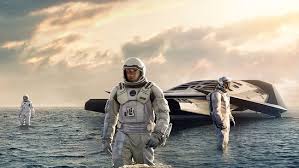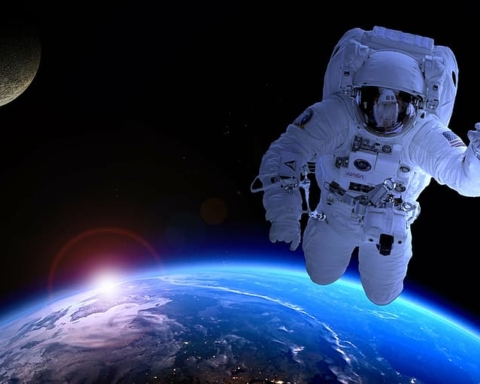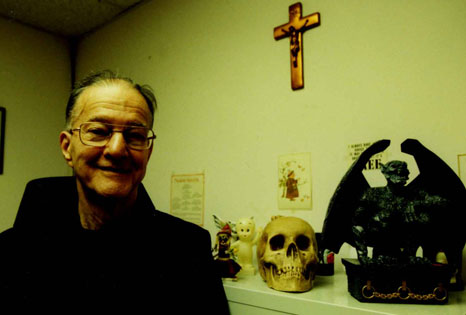By Harrison Leone
Managing Editor
For as long as there have been movies, there have been movies set in space. There have been certified Kubrick classics (“2001: A Space Odyssey”) Academy Award-worthy efforts (“Apollo 13”) and strangely overrated disappointments (“Gravity”). “Interstellar” is the latest entry into the canon of extraterrestrial feature films, and one of the strongest in recent memory. Director Christopher Nolan digs deep into his bags of visual tricks and innovative imagery to produce a strong, if occasionally unoriginal, film.
The comparisons between “Interstellar” and “Gravity” are obvious from the opening scene of the film: both movies were fall releases, generated early Oscar buzz, starred attractive, bodacious and jabbering male leads (George Clooney in “Gravity,” Matthew McConaughey in “Interstellar”), distressed actresses in short haircuts and placed a heavy reliance on screen after screen of CGI.
The difference between “Interstellar” and “Gravity” is that Nolan’s film used visual effects in concert with its significantly-more-compelling plot, while in Gravity, director Alfsonso Curon leaned on his computers as a crutch to prop up a less engaging story. “Interstellar” was buttressed by its stupendous images of bleak alien planets and swirling black holes, while “Gravity” depended on its shots of Earth in orbit and flying space garbage.
There is little to say about “Interstellar’s” visual effects besides that they are truly awesome. The new planets visited by McConaughey and his crew really do inspire awe and fill the audience with a visceral sense of total remoteness. The scenes of space travel, envisioned with the help of renowned astrophysicist Kip Throne, who served as the film’s science advisor, were remarkable in their own right, as well. This is a movie best experienced in theaters, as the feeling of plunging into a wormhole or crashing through the atmosphere of frigid arctic planets are spectacular in the theater, but may lose some of their potency on a home screen.
“Interstellar” also benefits from a surprisingly frightening plot. It is not horror in the traditional sense, with monsters, jump scares or gore. The fear hits home on an instinctual level, as humanity is forced to confront the hopeless and inescapable death of Earth as crops fall to blight and the atmosphere becomes choked with dust. It is as though all of mankind is trapped aboard a rapidly sinking ship, and, except for the select few astronauts who go off in search of a new home, there are no life boats. There is something existentially disturbing about the prospect of the Earth entering into an irreversible process of decay, and “Interstellar” strikes that disquieting nerve repeatedly.
Few actors have seen such a total reversal of their careers than “Interstellar’s” leading man. McConaughey has guided his career through two distinct eras, the first of which saw him star in such cinematic poison as “Fool’s Gold” and “Failure to Launch” that resulted in much-deserved scorn. Since his early-2000s’ foibles, McConaughey has set about rebuilding his career by not starring in movies alongside Sarah Jessica Parker, earning praise for “Mud” and, as impossible as it may seem to those who had watched his career develop, winning Best Actor for his role in “Dallas Buyers Club” at the most-recent Academy Awards.
The biggest knock against McConaughey, even as he climbed out of the rom-com cesspool, was that he has made a career out of playing himself. It is true that in most of his roles, particularly in “Dallas Buyers Club,” McConaughey hits many of the same notes as a fast-talking, authority-shirking rebel who is half-wild man, half-suave charmer, delivering his charisma-coated lines with a flirtatious leer. In “Interstellar,” there are still elements of McConaughey’s traditional swaggering, scene-stealing, tossing around impromptu nicknames to his crew and maintaining a cool confidence in a foreign galaxy. He does, however, reign in his manic energy enough to be a perfectly serviceable main character. McConaughey will never be mistaken for Laurence Olivier, but in “Interstellar,” he doesn’t need to be. He is able to keep the movie afloat while rendering some sincere emotional depth and kept the role from turning into yet another parody of himself.
The rest of “Interstellar’s” cast is a mixed bag. Anne Hathaway keeps tempo in a largely–neutered, second-in-command role, and her largest contribution to the film is committing a major blunder that McConaughey has to correct. The strongest performance came from Matt Damon, who is unintroduced until the film’s third act, but still manages to be the most original and memorable character to come out of “Interstellar.” Jessica Chastain (of “Zero–Dark Thirty” fame) continues to receive inexplicable acclaim, despite her consistently odd delivery of dialogue and the constant look of confusion on her face. The biggest disappointment was the repulsively unoriginal casting of Nolan-favorite Michael Caine as the old, wizened, Dylan Thomas-quoting director of NASA. It is unfortunate to see an actor of such legend stuck in Nolan’s bizarre vortex of unimaginative typecasting.
The acting and writing in “Interstellar” will not win any awards (at least it doesn’t deserve to), and it says something that the most engaging and original characters in the film were two sentient robots, but it is doubtful that anyone walked into the theater expecting “12 Angry Men.” McConaughey, Hathaway and company were given the keys to a gleaming, trillion-dollar interplanetary spacecraft, and succeeded in not wrapping it around a telephone pole on the way out of orbit.
Nolan’s reputation as a legendary director may be inflated as a result of his broad commercial appeal. His most interesting and ambitious film to date, “Memento,” generated only $40 million at the domestic box office-or about $15 million less than “Interstellar” earned in its first weekend. “Interstellar” sees Nolan trip up in some familiar ways, including his use of expected plot devices and occasionally predictable story-telling, but is nonetheless an effort worthy of praise. If you go to see “Interstellar” hoping for nothing more than a beautiful movie with pristine visual effects, you certainly will not be disappointed, and may even leave pleasantly surprised by the bleak cosmic world Nolan has crafted.
Leonehj11@bonavemture.edu









